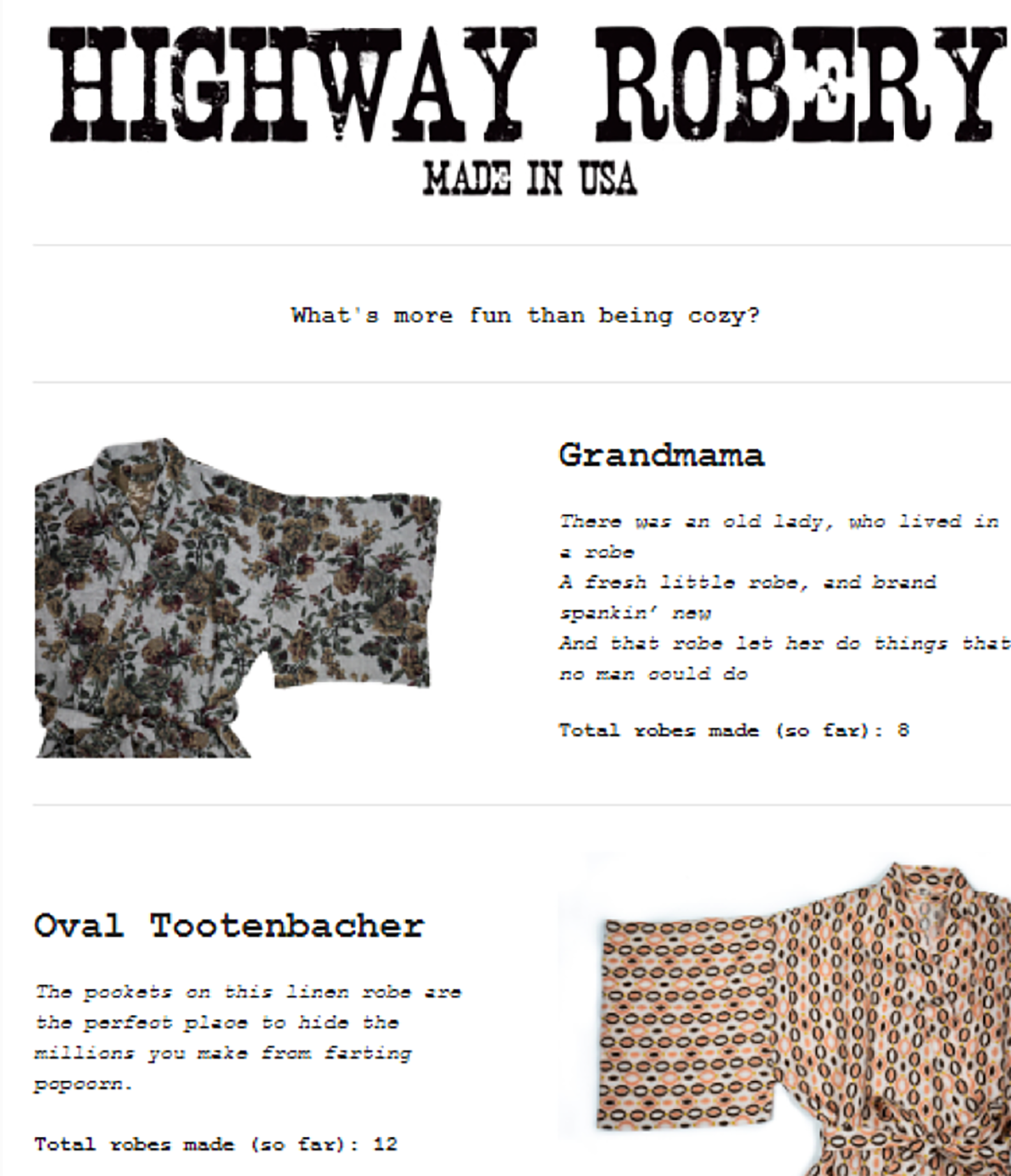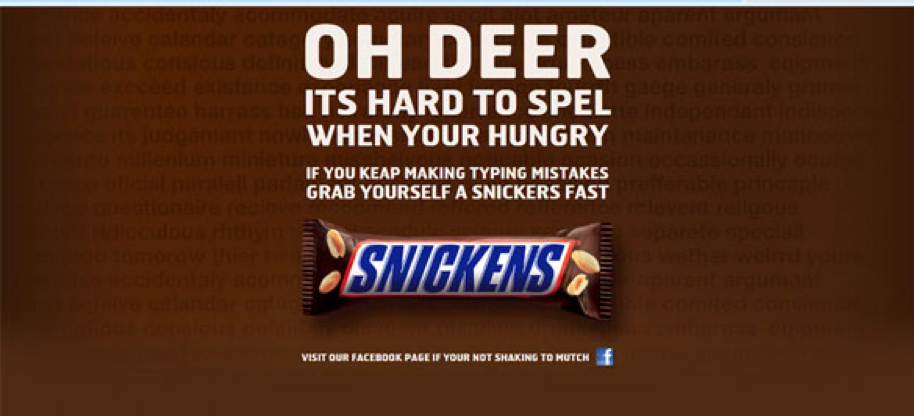Everyone likes a good joke once in a while. For content marketers, however, humor and weird ideas in their campaigns are no laughing matter. In many cases, marketers avoid humor because they're afraid that their audience won't take them seriously. Because people perceive humor differently, it's possible that not everyone will get the intended idea behind the humor. Let's take a serious look at this strategy and see how you can deliver that healthy dose of tasteful humor and wonderful weirdness to increase the likability of your brand.
1. Be a little weird
Being wonderfully weird is something that can make your brand famous within days. People love humorous and unusual content, as long as it's appropriate. Using weird ideas to fuel your content marketing strategies can make you stand out. Let's see some examples. An excellent example of a weird video that has gone viral is the advertising of Edeka, the largest German supermarket corporation. It featured a middle-aged man promoting the products sold in the supermarket in a variety of weird ways such as smoking sausage cigars and bathing in milk.
The result of this brave experiment was astonishing. In just four days since the video was published, it was viewed by 1.3 million people. Takeaway: creating weird and outright bizarre content can be super effective. The moral of the story is that people like when a brand does something different than everyone else. I mean, does your local supermarket's content have 19 million views on YouTube? Remember: Nothing risked, nothing gained.
2. Make memes
Although some digital marketers think that memes are just for bored office workers and high school kids, the reality is different. Meme marketing combines the elements of weirdness and humor, so it's definitely here to stay, according to Forbes. There is evidence to support how effective memes are as part of content marketing strategies. For example, 2017 data compiled by eMarketer using Venngage survey results found that they were in the top five types of visual content that delivered the highest engagement.

For those of you thinking that 5% is not a big deal: A content marketing strategy should use memes as an additional tool for producing content, not a principal one. Take a look at this meme created by BarkBox, an online subscription company for dog toys. The brand uses a very smart strategy by creating memes that everyone can relate to, whether they have a dog in their house or not.

The result of this strategy is an amazing Instagram feed that will make you laugh. A lot! Takeaway: Don't be afraid to use appropriate memes related to your product/service once in a while. To make it appropriate, follow these tips:
- Don't take yourself too seriously—memes are supposed to be ridiculous and silly.
- Use simple, natural language.
- Use some jokes specific to your industry/niche/product.
3. Make your email campaigns fun
If your business uses email marketing, don't lose the opportunity to make your promotional messages a bit more engaging. Obviously, there are many ways to use the power of humor in email marketing, so let's see how other brands have done it. An excellent example of using humor in email marketing comes from Ray-Ban. The email below is a shopping cart abandonment email. It encourages the recipient to return to the site and complete the purchase in a creative, weird, but funny way.

As you can see, the email is trying to convince the prospect to return to the site by using a healthy dose of humor (“Attacked by a bear?â€). It can easily make the recipient smile and achieve its purpose of increasing conversion rates. Using humor can also be a creative way to achieve marketing purposes because a few people enjoy checking their emails. There's a big problem with emails, though: Customers tend to get a lot of them every day. In fact, recent research by the Radicati Group discovered that the number of business emails sent and received per user per day totaled 122. Your customers' inboxes are overflowing with unread messages, so trying to stand out with engaging subject lines is something you have to do. Humor can help you here. By making a subject line a bit weird or funny, you can increase the chance that the recipient stops for a second to read it fully when scanning the inbox. Of course, this also works to make your brand more memorable. Let's consider some examples.

This email was sent by Highway Robery, a brand selling kimono-style robes, and it shares two new products that are supposedly “great for a party on your couch.†An interesting line, right? And the smiley face also helps the message to stand out in the inbox. Well, the fun part is not over yet. Open the email and you'll get one more example of humorous copy. Instead of going for traditional product descriptions containing stuff like materials and sizes, the brand uses humorous verses about each of the products (which, by the way, also have hilarious names).

This great example of using humor in both email subject line and copy also could be helpful to business owners who target millennials. According to a survey from Adobe, 58 percent of U.S. millennials prefer brands to contact them with emails. This target audience appreciates when brands communicate with them in a natural, conversational style, but Highway Robery apparently took it to another level by making it fun as well. The next example comes from KFC. The subject line of this email reads “There's a new Colonel at the door.†We've seen a fair share of incarnations of the Colonel, so let's see who's going to play the role this time.

While this may not be super funny, the body of the email includes a call to action to "Meet the Colonel," which leads to a YouTube video of the new colonel, played by a comedian Jason Alexander (who played "George Costanza" in Seinfeld). Together with the silly lyrics, the video makes for an entertaining piece of content that all KFC fans will appreciate
.
Takeaways:
- Humor is a great technique for email marketing campaigns.
- Humor can be used to attract the attention of leads and encourage them to act.
- Humor is an excellent way to deliver marketing campaigns consisting of diverse content types.
Important considerations: Proofreading, translating, and finding ideas
Proofread your materials before you share them is a must. Remember: You're using an unconventional way to promote your product/service (humor that is), so you should be very careful to ensure that you don't embarrass your brand. The only exception is that you want to use a lack of proofreading to amuse the viewers. For example, this great example from Snickers. Not only is it an appropriate use of incorrect spelling, but it's also a great bit of humor.

Did the examples that we used in this article make you smile? If they did, then you'd agree that using weird ideas and humor could be effective to establish a connection with customers and increase the likability of your brand. As you can see, many brands from different niches are using it in their content marketing campaigns, so get inspired and create something that could amuse your target audience. Just remember not to go too far and create something inappropriate or too distracting from the original message of your content. Get plenty of opinions from peers on your funny content ideas before sharing them with your customers to avoid confusion and ensure broad appeal. Good luck!
Daniela McVickerDaniela McVicker is a blogger and content editor at Top Writers Review with rich experience in writing about UX design, content planning, and digital marketing. She helps individuals and organizations improve their web content writing, design, and planning skills.